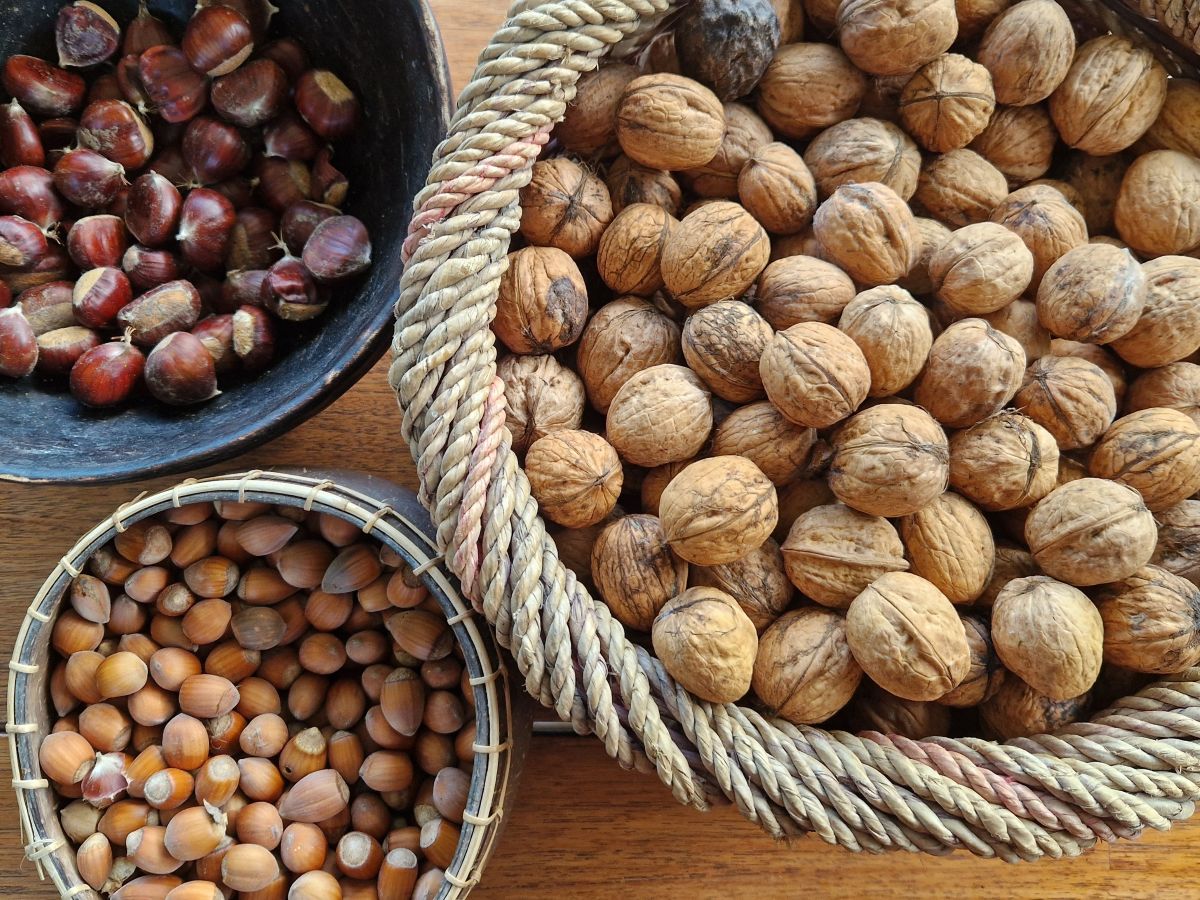
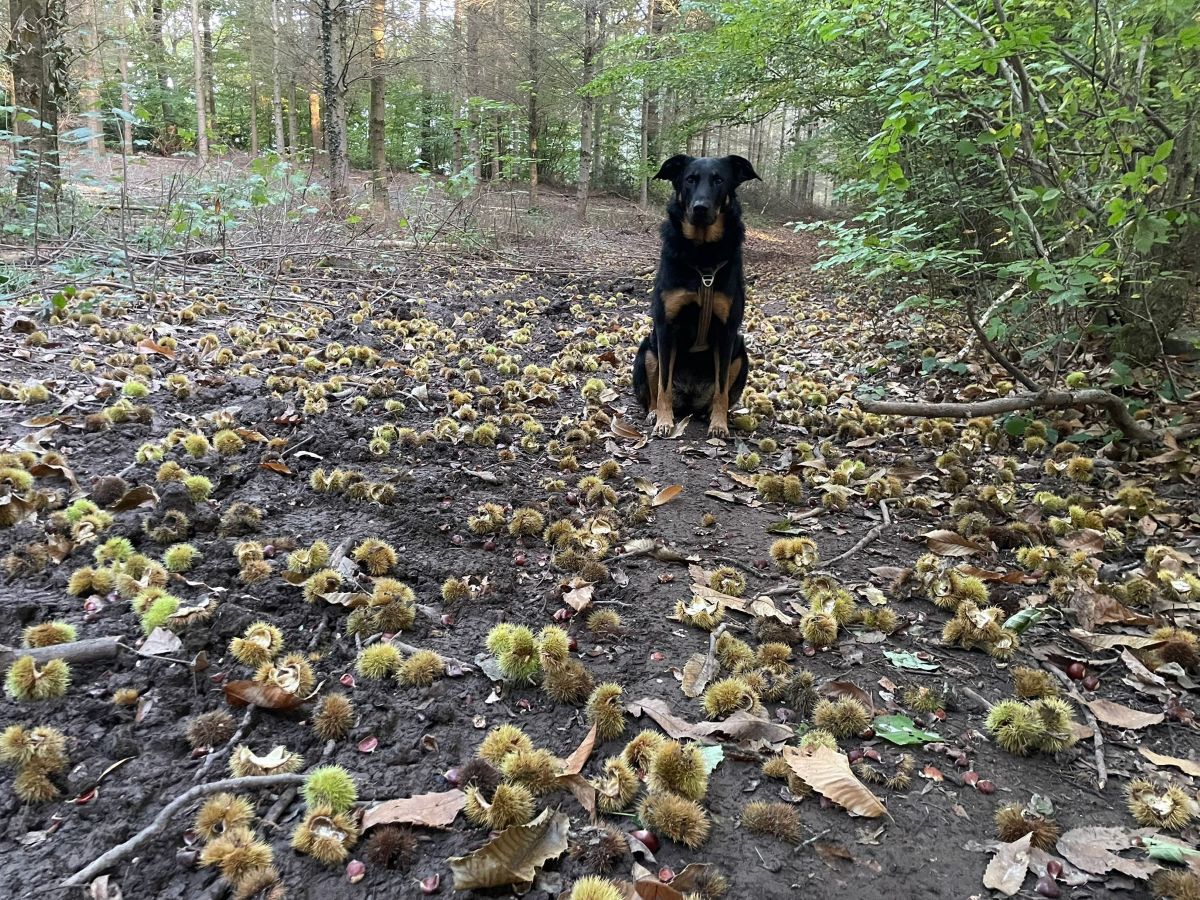
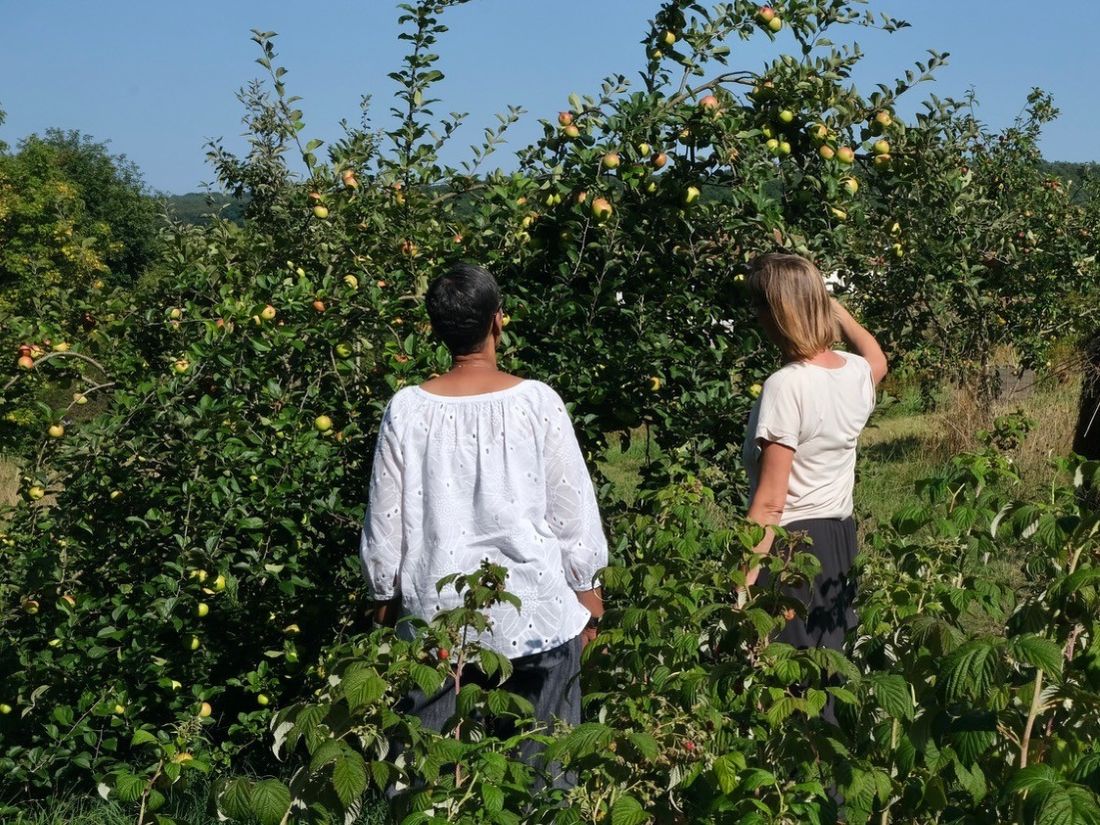
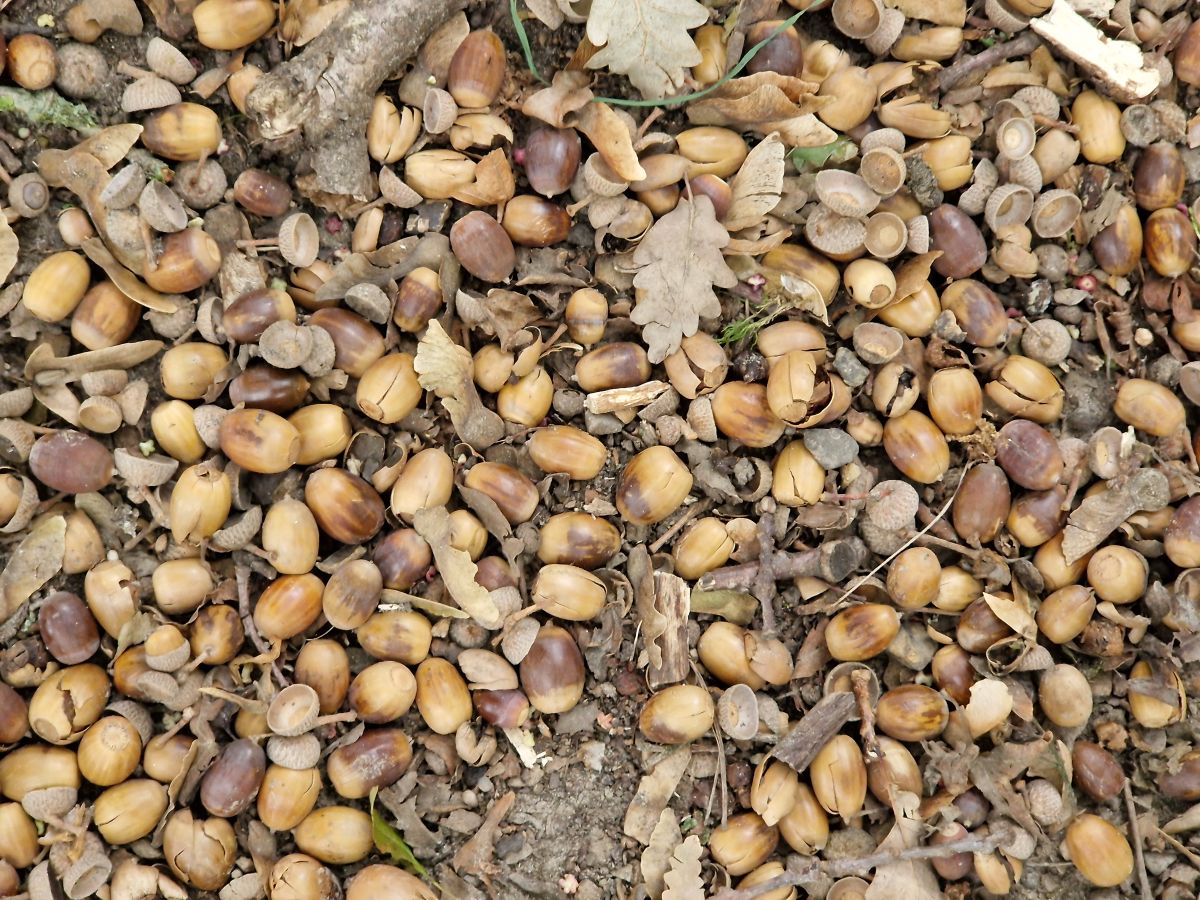
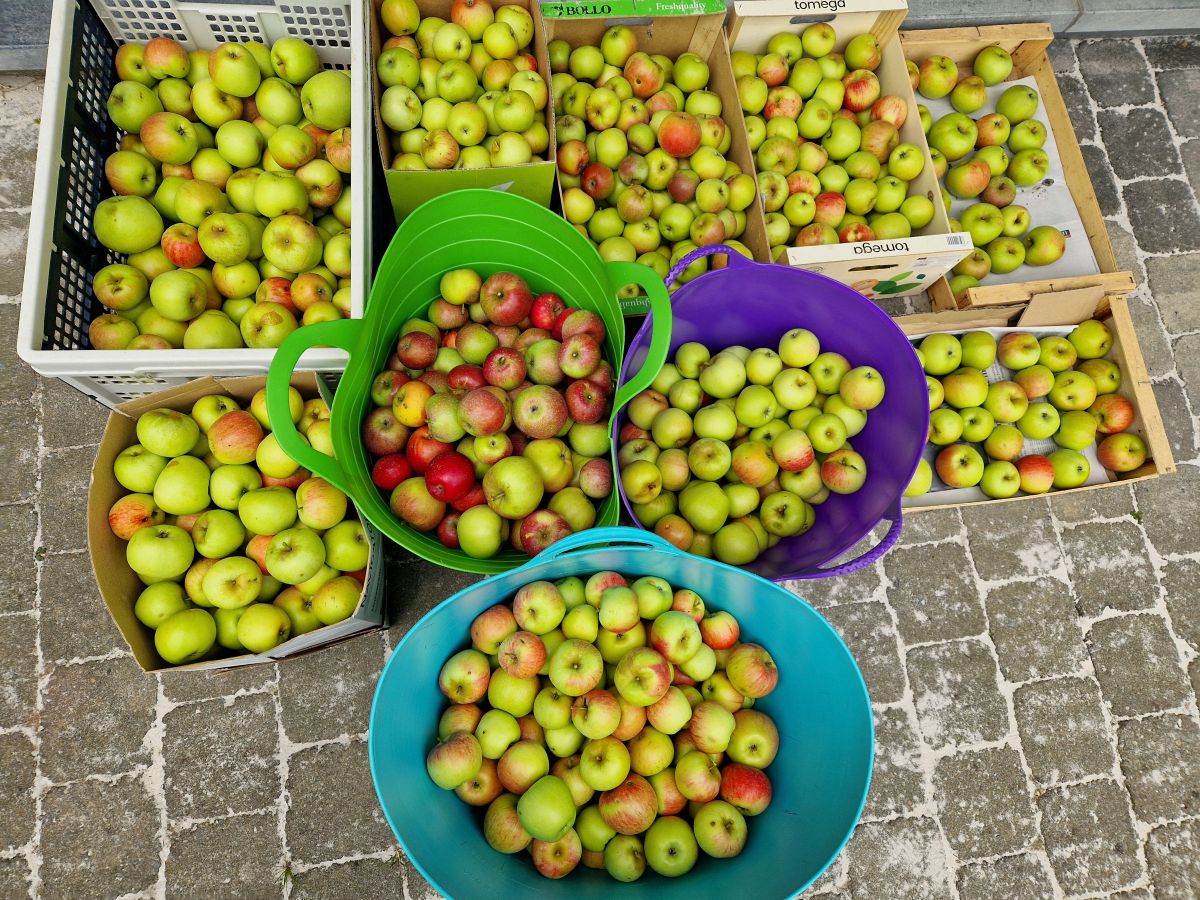
Mast year: fruits in abundance
14/10/2025
It will not have escaped your attention: this year there were noticeably more apples than usual. Acorns are also in abundance at the moment. For the nut lovers among us: the walnut, hazel and sweet chestnut trees also have exceptional yields. Feast on them!
A mast year is a year in which trees and plants bear much more fruit than average. It does not occur in all tree species, but is mainly known for beech, oak and chestnut trees in the forest. Originally, such an exceptional year occurred about once every nine years, but due to climate change, it now happens on average once every four years. It is therefore not a fixed pattern, but a changing, cyclical event.
An old saying goes, "A heavy nut harvest means a hard winter ahead.”, but science doesn't quite seem to agree. We'll see what the winter months bring us. What is certain is that the past mild winter and dry spring have ensured lots of blossoms and good pollination - resulting in rich fruit setting. Late frost, on the other hand, is detrimental to blossoms and is more likely to result in a small harvest.
A mast year is a year in which trees and plants bear much more fruit than average. It does not occur in all tree species, but is mainly known for beech, oak and chestnut trees in the forest. Originally, such an exceptional year occurred about once every nine years, but due to climate change, it now happens on average once every four years. It is therefore not a fixed pattern, but a changing, cyclical event.
This abundance of fruit provides more food in the forest, which can lead to an increase in populations of wild boar, roe deer, red deer, mice, jays, ducks and pigeons. When these animals thrive, their predators - such as the fox and wolf - also benefit. The term "mast" originally means "pig food" because pigs used to be fattened with nuts. On the other hand, a mast year also helps rejuvenate the forest, as more seeds will germinate.
The weight of the abundant fruit can put stress on the branches, which increases the risk of breaking off - especially in stormy weather. For example, we removed a third of our apples early to avoid branch breakage or even rupture. Mast years are common in apples and pears, but also in other fruit trees. This year, for instance, we also had remarkably more cherries. Such a fruitful year is often followed by a rotation year, in which the tree bears less fruit.
A good fruiting year for one species does not automatically mean the same for another. Oaks had a mast year this year, but beeches did not. Apples did exceptionally well, but pears much less so. It remains difficult to predict: a mast year depends on a complex combination of factors such as weather conditions, the presence of pollinators (and preferably not strong winds), tree age, microclimate, and the general health of the tree. These factors determine whether the tree has accumulated sufficient reserves in summer and autumn to flower and bear fruit abundantly the following year.
Another - and different - phenomenon is stress-induced flowering, in which an old or diseased tree invests its last energy in reproduction by producing more fruit. Unlike in a mast year, these fruits are often of low quality. Nature remains a wondrous system!
IMBY wishes you a happy autumn, full of nut pleasures, I'm going to try roasted chestnuts myself!
Comments
- ferme oogst - hier merken we het vooral aan de okernoten al zijn er ook al wat aangetast door de walnootboorder (10%) (JohanM)
- Zeer duidelijke uitleg. (Johan Claessens )
Add a comment


